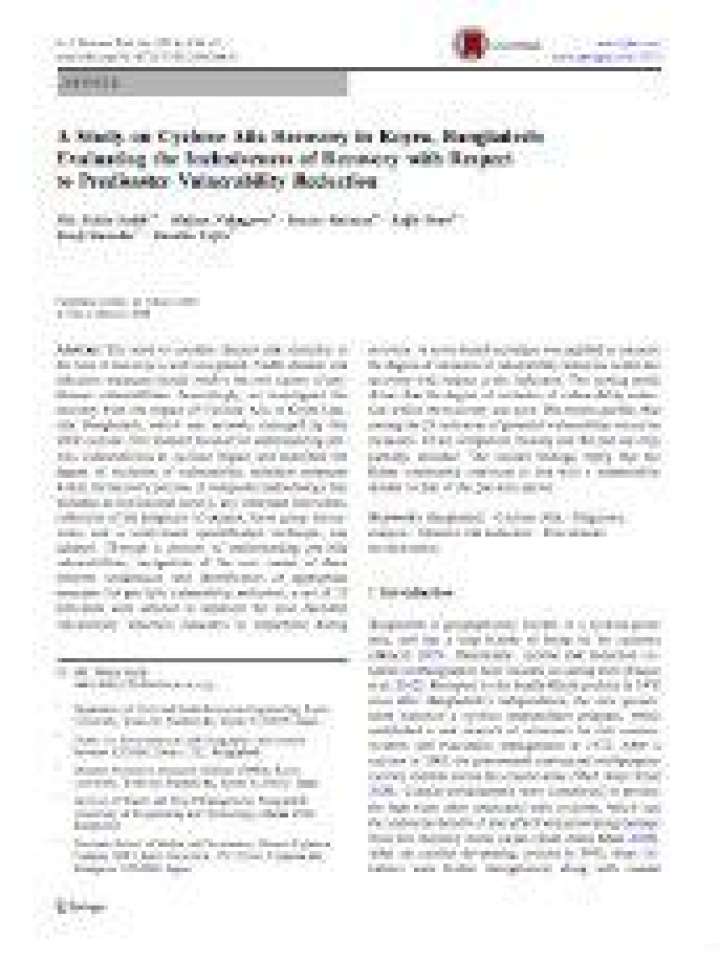A study on Cyclone Aila recovery in Koyra, Bangladesh: Evaluating the inclusiveness of recovery with respect to predisaster vulnerability reduction
The need to consider disaster risk reduction at the time of recovery is well-recognized. Viable disaster risk reduction measures should resolve the root causes of predisaster vulnerabilities. Accordingly, we investigated the recovery from the impact of Cyclone Aila in Koyra Upazila, Bangladesh, which was severely damaged by this 2009 cyclone.
This research focused on understanding pre-Aila vulnerabilities to cyclone impact and examined the degree of inclusion of vulnerability reduction measures within the recovery process. A composite methodology that included an institutional survey, key informant interviews, collection of the judgment of experts, focus group discussions, and a score-based quantification technique was adopted. Through a process of understanding pre-Aila vulnerabilities, recognition of the root causes of these inherent weaknesses, and identification of appropriate measures for pre-Aila vulnerability reduction, a set of 23 indicators were selected to represent the most desirable vulnerability reduction measures to implement during recovery. A score-based technique was applied to measure the degree of inclusion of vulnerability reduction within the recovery with respect to the indicators.
The scoring result shows that the degree of inclusion of vulnerability reduction within the recovery was poor. The result specifies that among the 23 indicators of potential vulnerability reduction measures, 10 are completely missing and the rest are only partially included. The overall findings imply that the Koyra community continues to live with a vulnerability similar to that of the pre-Aila period.
Explore further
